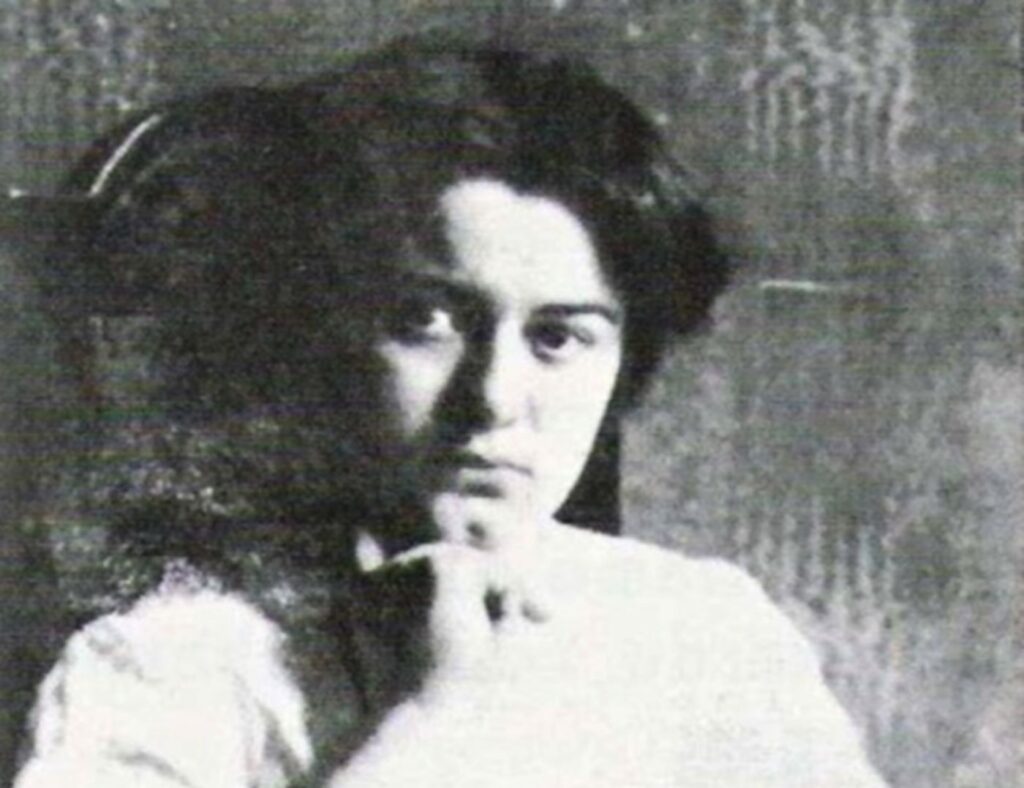Edith Stein is surely one of the great, and undeservedly overlooked, thinkers of the twentieth century. A philosopher steeped in both modern phenomenology and Thomism, Stein devoted herself to reconciling these very different streams of Western thought.
But perhaps more interesting to the wider public are her writings about women’s distinctive contributions to society. There we find a perspective that still feels every bit as original, brilliant, and timely as it was when she first presented it.
Today, almost one hundred years after she wrote, Stein is occasionally alluded to in discussions about feminism, but in large part she remains known only among Catholics, and mostly for her saintly life. If she were better known for her social commentary, our contemporary debates about women’s role in the world would be far more fruitful.
Blessed by the Cross
Start your day with Public Discourse
Sign up and get our daily essays sent straight to your inbox.To Catholics, Stein is known by the name she took in monastic life: Teresa Benedicta of the Cross. She is most often mentioned in the context of the Holocaust, for she was murdered at Auschwitz. Although she died a Catholic, Stein was born Jewish and strongly identified with the Jewish people, perhaps even more so after she became a Christian. She felt intensely the honor, and the responsibility, of being of the same blood as the man she called Lord and God. She pondered deeply her people’s mysterious vocation to lead humanity in atoning for sin through suffering (she was born on Yom Kippur, the Day of Atonement, the holiest day of the Jewish year). As anti-Semitism and National Socialism were taking over Germany in the early 1930s, she dimly foresaw that her people’s suffering would be pushed to new, horrible, and humanly unintelligible extremes in the Shoah. The very name she took in religion—Teresa Benedicta a Cruce, Latin for “Teresa, Blessed by the Cross”—reflected the centrality of the mystery of suffering to her prayer life.
Raised in a pious Jewish family of many children (eleven in total, four who died very young) in late-nineteenth- and early twentieth-century Germany, Stein drifted away from religion as she approached adulthood. In her moral life, she remained relatively conservative, no doubt because of her mother’s impressive example. Mrs. Stein not only held her children to high moral standards, but raised them for many years without their father (who died when Edith was less than two years old), taking over the family business to provide for them. It was surely her mother’s prayers and example that eventually led Edith back to God.
What also led her back was her encounter in college with philosophy, particularly the phenomenology of Edmund Husserl. Stein was captivated by Husserl’s project to investigate the essence of “things in themselves,” a question that Immanuel Kant had banished from philosophy over a hundred years before. She became his doctoral student and, thanks to her unusual intellectual gifts, his graduate assistant, who tutored his other students and edited his writings.
Husserl’s interest in philosophical realism may explain why many of his pupils, Stein included, became attracted to religion, especially Christianity. (On his deathbed Husserl himself professed Christian beliefs, after having lived without religion.) In this atmosphere of spiritual ferment, Stein one day came across the biography of Teresa of Avila, founder of the Discalced Carmelite nuns in sixteenth-century Spain. She read it in a single night, and on finishing it said, “This is the truth.” Within a few months, she became a Catholic and started leading a quiet life of intense prayer. She withdrew from the world, taking up a teaching position at a girls’ school run by nuns.
Bringing the Divine Life into the World
But then Stein discovered the philosophy of Thomas Aquinas. Perhaps struck by Aquinas’s ability to show the intimate connection between the material and spiritual aspects of man’s existence, Stein realized that one need not be cloistered to pursue a contemplative life. Even in the middle of the world, genuine holiness was possible:
I have gradually come to the realization, that something more is asked of us in this world, and that even in the contemplative life, one may not sever the link with the world. . . . The deeper one is drawn into God, the more [one] needs to go out of [oneself]—out into the world, that is, to carry the divine life into it.
This insight was confirmed for her soon after by the Benedictine abbot with whom she spoke regularly for spiritual guidance. Although she later became a Carmelite like Teresa of Avila, at that time the abbot advised her that God was calling her to serve the Church in the world with her extraordinary mind.
In 1932, she reentered higher academia, obtaining a lectureship at the Educational Institute in Muenster, after being passed over for more prestigious positions on account of her Jewish background. Even before then, she had started giving public lectures on the place of women in society and the Church at the invitation of numerous Catholic organizations, who had encountered her scholarship. These lectures were later collected into the volume known in English as Essays on Woman, among which the first lecture, “The Ethos of Women’s Professions,” provides an especially useful entrée into Stein’s brand of feminism. There Stein deals with a question that still dominates conversations about women today, both in the culture at large and within the conservative movement: what is woman’s relation to the world of work? Her answer to that query also reveals her perspective on what it means to be a woman generally.
The Natural Vocation of Woman
Stein divides the feminist movement of her time into the “radical leaders,” who claimed “that all professions were suitable for women,” with no distinction, and traditionalists who recognized “only one feminine vocation, woman’s natural vocation.”
Stein agrees with the latter group that each woman’s nature predisposes her “to be wife and mother.” “Only the person blinded by the passion of controversy could deny that woman . . . is formed for a particular purpose,” written into her body. Because the soul is the body’s form, woman’s soul is also, in part, distinctly feminine, even though it shares with man’s soul the same “basic human nature.”
By the vocation to motherhood, “[w]oman naturally seeks to embrace that which is living, personal, and whole.” She longs “[t]o cherish, guard, protect, nourish, and advance growth,” whether in others—above all her children—or in herself. Consequently, “[l]ifeless matter,” i.e., “the fact,” interests her only if it serves living persons; she finds “abstraction in every sense” alien to her spirit. Woman’s thinking “is not so much conceptual and analytical as it is directed intuitively and emotionally to the concrete.” She sees every part of reality in light of the “totality” in which it exists.
Woman’s maternal vocation shades naturally into her vocation of “companion”—or wife—to man. “[G]enerally, it is difficult for [man] to become involved in other beings and their concerns.” He tends to be “consumed by ‘his enterprise,’ and . . . expects that others will be interested and helpful.” By her natural empathy—her interest in the person—a wife is drawn to enter her husband’s perspective and appreciate his interests, even though they may be “far from her own concerns.” By that same natural altruism she draws her husband’s attention out of himself, correcting the rough edges of his personality and behavior.
Woman has an “active sympathy for those who fall within her ken [that] awakens their powers and heightens their achievements.” To summarize Stein’s view, one might say women humanize: they provide the basic nurturing that people at every stage of life, children and adults, need to reach full development.
But none of these virtues can be taken for granted. Like men, women are susceptible to the universal human tendency to selfishness, which perverts their strengths.
Selfishness turns “the personal outlook” of woman inward, moving her “to center both her activities and those of others about her own person,” as manifested in “vanity, desire for praise and recognition . . . an unchecked need for communication,” and “an excessive interest in others, as in curiosity, gossip, and an indiscreet need to penetrate into the intimate life of others.”
Self-seeking, if it infects woman’s holistic view of the world, can lead to “the frittering away of her own powers: [an] antipathy for the necessary objective disciplining of individual abilities [that] results in her superficial nibbling in all areas.” Her aptitude to form relationships can lead to a “complete absorption” with others, “over the measure required by maternal functions.” Instead of being a “sympathetic mate,” she becomes “the obtrusive mischief-maker who cannot endure quiet, reserved growth.” Instead of enabling others’ full development, she “hinders and paralyzes it.” Much unhappiness in marriage, and “alienation between mothers and growing children and even mature offspring,” can be traced back to these perversions of the feminine genius.
Women in the Professions
Reflecting on these vices naturally leads Stein to consider woman’s professional life, because, she thinks, “[a] good natural remedy against all typical feminine defects is solid objective work.”
Work—getting things done—requires one to pay attention to facts closely: one must study objective reality seriously and submit to its laws. To carry a project to completion, one cannot afford to be superficial or to get distracted by personal preferences of oneself or one’s co-workers. By teaching the worker to be objective and to persevere in achieving goals, work helps women (and men) grow in all the virtues, making them more fully human.
Work should also make women more authentically feminine. Woman must not set aside her “good and pure personal attitude” in work; she must learn to integrate it with work’s demands. Proper “work–life balance,” as we say today, brings “maturity and harmony” to woman’s person, much as John Henry Newman (whom she cites) says a liberal education does.
Can women do work beyond that of being a wife and mother? Certainly: “every normal and healthy woman is able to hold a [professional] position. And there is no profession which cannot be practiced by a woman.” Anyone who says otherwise is under a “subjective delusion.” Surely thinking of her own mother, Stein says “[a] self-sacrificing woman can accomplish astounding achievements when it is a question of replacing the breadwinner of fatherless children, of supporting abandoned children or aged parents.” Then of course every woman, like every man, has her own talents, which “can enable her to embark on any discipline, even those remote from the usual feminine vocations.”
Still, on average some callings seem more suited to women’s distinctive abilities. These include “all vocations depending on sympathetic rapport such as nursing, education, and social work,” as well as “the vocation of doctor and nurse, teacher and governess, housemaid, and the entire range of social services.” Stein thinks scholarship is also natural to women (she was an academic, after all), especially “those branches dealing with the concrete, living personal element, i.e., the arts and positions wherein one may help and serve, such as translating, editing, and, possibly, guiding a stranger’s work appreciatively.” (Here she surely speaks from her experience working for Husserl.) All these professions require “the same spiritual attitude which the wife and mother [need],” only they extend it to people outside a woman’s family circle.
Moving well beyond “traditionalist” feminism, Stein says that “even the professions whose objective requirements are not harmonious with feminine nature, those termed as specifically masculine, could yet be practiced in an authentically feminine way.” Examples include “work in a factory, business office, national or municipal service, legislature, chemical laboratory, or mathematical institute.” “Masculine” professions tend to revolve around “dull material or abstract thought.” But “in most instances [of them], the work is conducted with other people,” and hence they call for woman’s humanizing talents as well: “the development of the feminine nature can become a blessed counter-balance precisely [in professions] where everyone is in danger of becoming mechanized and losing his humanity.”
Take the example of the work of legislation: “[a] man would perhaps aim at the most perfect juridical form in law or in ordinance; and, in so doing, he might give little consideration to the concrete circumstances which it would be good to settle; whereas woman, if she remains faithful to her nature even in Parliament or administrative service, will look for the concrete goal”—the real good of the persons whom the law serves—“and adjust the means to the end.”
Woman’s humanizing talent is not some pleasant but incidental help to work—as though it merely finished off or polished essentially masculine tasks. The human element is essential to all human activity.
Work was made for man, not man for work. If one makes work an end in itself—which men on average tend to do more than women—it will enslave people rather than fulfill them. Then work itself will be frustrated because, as Stein puts it, all tasks, even the most abstract, lose their meaning except “in ultimate service to a living whole.” Women bring precisely this concern for the whole human being to the workplace. For example, if a person knows that, at work, he or she will find others who reliably offer help and sympathy—virtues at which women on average excel more than men do—then “much will be awakened or kept vigorous [in the person] which would otherwise atrophy.” But without a sufficient amount of the feminine touch, workers (and men especially) might get so consumed with their tasks that they neglect their relations with their spouses, children, and friends. As their personal lives deteriorate, they themselves will suffer, and so will the quality of their work.
Women complement men in the workplace, as one half complements the other. Hence all aspects of society require women’s active participation, including, for Stein, the Church. Hence she points to Mary, Mother of Jesus and of the Church, as the “prototype of woman in professional life.” Stein finds especially instructive Mary’s part at the wedding of Cana, where her son, at her request, performed his first miracle of turning water into wine to replenish their hosts’ dwindling supply of drinks: “Mary . . . in her quiet, observing look surveys everything and discovers what is lacking. Before anything is noticed, before any embarrassment sets in, she has procured already the remedy. She finds ways and means, she gives necessary directives, doing all quietly. She draws no attention to herself.”
Excellence through Obedience
That last point about doing and disappearing may sit uneasily with some contemporary readers. Even more controversial is Stein’s praise of Mary as a model of obeying the men in her life. Mary “participat[es] in [her husband Joseph’s] life as she furthers his objective tasks and personality development.” She serves her son, to whom “she gives true care, encouragement, and formation of his God-given talents.” To both “she offers . . . selfless surrender and a quiet withdrawal when unneeded.”
Perhaps more shockingly, Stein says any wife must “serve [her husband’s] cause for his sake” and therefore “under his guidance,” even in the matters of running a household and raising children that, Stein thinks, come more easily to women. Woman is called to this service because it is a necessary condition for man to fulfill his own natural vocation, which is to be “guide and protector of his wife.” Woman is also called to this submission because of her “natural tendency toward obedience and service:” “The deepest longing of woman’s heart is to give herself lovingly, to belong to another, and to possess this other being completely.”
What is one to say to such statements? Some might call Stein a retrograde. But as we saw, she finds “delusional” those who think that women belong only in the house raising children. She says women can hold any profession in society, even the highest ones in politics. She herself was an accomplished scholar who never married or had children.
Does Stein worship men as the pinnacle of humanity? Not at all. She lays out all the ways in which women are a necessary complement to men by virtues in which, on average, they outdo men. Women have their common vices, but men do, too, especially a tendency toward “one-sided specializing and enslavement to [their] discipline.” Without men, women might become superficial and unobjective; but without women, men would become dull, cruel, and inhuman—alienated from what is most fundamental to their own nature, more beast than man.
Moreover, Stein is not saying that women need to learn to obey more than men do. All of us, men and women, exist in varying states of dependence; therefore all need to learn to follow, and accept, the guidance and help of others: citizens must obey representatives of the law; a patient should obey the directions of his doctor; a defendant who does not want to be a fool should obey the counsel of his attorney.
What perhaps Stein does mean to suggest, by noting that woman has a greater “natural tendency” to obey, is that woman on average obeys better than man does. Therefore woman has a special calling to teach this most important virtue to her husband and their children by her own example: the better she in particular obeys—especially in those heroic cases where she yields in matters of moral indifference—the easier it will be for everyone else to learn to obey, more perhaps than if her husband does the same.
But to really understand Stein’s statements about obedience, one must see them through her religious perspective. When she states that woman’s vocation “requires subordination and obedience” to her husband, she immediately adds “as directed by God’s work.” It is God whom woman serves, through serving other human beings, and woman is not bound to obey any human being in all respects—especially not in the sins to which all human beings are prone. To give her husband the total obedience that only God deserves would be “perverted”—“a form of slavery.” Likewise, her husband’s vocation to protect her and their children is not self-aggrandizement, but his own school in virtue and obedience to God’s will, in which he must submit himself to the interests of his family.
God is so central to woman’s vocation in Stein’s view that, strictly speaking, woman does not need a human husband to fulfill her vocations: a woman can exercise spiritual motherhood by taking God Himself as her spouse (as Stein did as a Carmelite nun), helping him beget spiritual children (through the conversion of souls in grace) by her prayer, sacrifice, and service. In fact, the celibate woman’s calling best fulfills woman’s natural longing for complete self-surrender: “Only God can welcome” a person’s total self-gift.
Moreover, although celibacy is analogous to human marriage, it more clearly prefigures the sort of life all women will know in the Resurrection. Thus it serves as a visible reminder of humanity’s eternal destiny. And that destiny is, for Stein, the equalizer of men and women. Authentic love of God in religion, the highest of human activities, “transcends difference of sex.” In it, women do not need to obey God more than men do, nor men more than women. If religion decays, however, women’s sufferings will increase; because in our fallen world, unless human beings consciously cultivate and prioritize the spiritual virtues over earthly power, men will tend to dominate women.
If we disagree with Stein’s vision of womanhood, we should ask whether we really disagree with the value of obedience at its core: that to find ourselves, we must lose ourselves.
The Handmaid of the Lord
But the best way to elucidate Stein’s point may be to extend the lesson she draws from the wedding at Cana and Mary’s dealings with Jesus, who was the head of their family after Joseph’s death.
When Mary notices that the wine of the wedding feast is running low and asks Jesus to do something, he at first denies her request, saying “Woman, what does that have to do with us? My hour has not yet come.” Eventually he does act, but not because his mother scolded him or started to do the work herself. Indeed, she accepted his decision—she obeyed.
But this obedience was not passive or blind. She did not distrust what her conscience had told her—that something should be done. Rather, as she had done at other times in her life, she pondered the deeper meaning of her situation.
She decided that perhaps her son would respond better if she found others through whom he could work indirectly—the servants at the feast—who would deflect attention from him. After all, she knew he preferred to be hidden. But even then she did not take charge and order the servants around; she only told them what she would have told anyone—to obey Jesus: “Whatever he tells you—do it.” She respected her son’s freedom and responsibility, leaving the final decision to him; but she smoothed the way for him, with a perfect sensitivity to his temperament that only a mother could have. It was little surprise then that her son, perhaps won over by the concern she showed for the newlyweds (probably children of her friends) and by her thoughtfulness toward him, acted as his mother had hoped: he told the servants to fill jars with water, which miraculously turned to wine. Thus did Mary, not by a command but by her obedient spirit of service, obtain her son’s obedience to herself.
Which mere mortal in history had greater power than this woman?—whom, if Christians are correct, God himself here obeyed; who was the first human being to proclaim the Gospel of Jesus Christ (“Whatever he tells you—do it”); who was responsible for this miracle that began Jesus’s public ministry—just as she was responsible for the miracle of his taking flesh in her (“Behold the handmaid of the Lord: be it done to me according to thy word”)—by an act of obedience.
No wonder that Jesus addressed her as “Woman” at this event—not out of gruff impatience, but to signal to posterity that here she acted as the paragon of her sex. Even Jesus, who excelled her by his divinity, in his humanity learned from her the way to self-fulfillment through self-emptying. Perhaps he needed to learn precisely that lesson before he could perform this first miracle that set in motion the events that ended in his “hour” on the Cross. Her example, engraved in his memory, became the foundation on which his human nature stood as his divine Person made that consummate act of obedience—as he gave his life to God for the salvation of the human race, saying “Not my will, but yours be done.”
If we disagree with Stein’s vision of womanhood, we should ask whether we really disagree with the value of obedience at its core: that to find ourselves, we must lose ourselves. Perhaps a deep-seated desire for radical autonomy explains why our contemporary age, so influenced by forms of feminism that reject all obedience, tends to be so lacking in religion—obedience to the One who deserves it most.
Integrating Work and the Feminine Genius
If Stein is correct, the lack of religion frustrates true feminism—not just by opening the way to male domination, but by withdrawing from women the divine help they need to integrate their distinctive feminine personalities with the demands of social life, especially the life of work.
Stein identifies two typical vices of women in this regard.
On one hand, some women do not work enough. “[S]uperficial and unstable,” they “chase after pleasure to fill their inner void.” They marry and divorce. They let their husband and children fend for themselves at home, or they delegate the work to hired help, who may be “no more conscientious than the mothers themselves.” If they do work, it is not as an end in itself, but just to make money to fund their vain pursuits of pleasure. “[I]n their case, one can speak neither of profession nor of ethos.” So destructive are such women to human life that Stein sees a close connection between their increase and the “breakdown of the family and the decline of morals” in recent times.
On the other hand, there are many women who do find suitable work and take it seriously. But a large number of them do not learn how to work well as women. Because they approach work “just like a man,” their “denied, stifled nature asserts itself,” “and they long to be elsewhere.”
Yet even “the best women” of today’s world, Stein says, who try to avoid both these extremes, feel “almost overwhelmed by the double burden of family duties and professional life,” and understandably so. How are such women to overcome the inevitable frictions that arise in a home with two parents who take their work seriously, whether they work in the home or outside it? “Where are [these women] to get the needed inner peace and cheerfulness in order to offer stability, support, and guidance to others?”
To find an answer, Stein considers the example of the “true heroines” in modern life with whom “[a]ll of us are familiar,” whether from their public fame or our personal knowledge of them:
There are the mothers who, radiating all warmth and light in the home, raise as many as nine children and impart to them and to [those children’s] children full blessings for their entire lives; and these women are magnanimous as well toward all strangers in need. There are the minor instructors and officials who support an entire family from their salary and look after domestic affairs before and after the professional work; yet, they can also find time and money for different church and charitable functions.
“How to explain all their achievements which one might often declare to be impossible by nature?” The answer must be, “[o]nly by the power of grace”—“divine life itself, . . . the inner driving power from which acts of love come forth.” And to obtain that divine life, one must submit oneself to God. Stein, a Catholic, naturally concludes that the modern feminine ideal is impossible without prayer and devotion to the Eucharist, a devotion that other women, including Dorothy Day and Mother Teresa of Calcutta, found essential to achieving their mission of serving the poor. Ultimately the crisis of the modern woman is, like all crises of modern civilization, a crisis of sanctity.
A Wholesome Collaboration of Both Sexes
Spiritual conversion, however, is only the beginning. If our society is to resolve the lingering question “What is a woman?” we will have to think through the concrete details of how women can integrate their professions with their femininity, without stifling it.
Nevertheless, Stein suggests, one must not change professions so as to exclude the distinctive contributions of men.
As she closes her essay, Stein asks, “[W]hy are there such frequent discussions on women’s professions but hardly any on men’s professions? . . . Is it not also true of man that his nature is or should be a co-determining factor for the selection and formation of his vocations?” Men also need to learn better how to integrate their distinctive nature with their work. Many people have been devoting much thought to feminine nature for some time, but how many have really taken seriously the question “What is a man?” The answer to that, Stein suggests, is not so obvious. Perhaps we have been taking masculine nature for granted, as much as, or more than, feminine nature.
In conclusion, Stein calls us all, men and women, to greater self-knowledge and cooperation in service of our highest calling:
[A] wholesome collaboration of the sexes in professional life will be possible only if both achieve a calm and objective awareness of their nature and draw practical conclusions from it. God created humanity as man and woman, and He created both according to His own image. Only the purely developed masculine and feminine nature can yield the highest attainable likeness to God. Only in this fashion can there be brought about the strongest interpenetration of all earthly and divine life.
Let us subject our unexamined opinions about both women and men to calm reflection, with the same humble, contemplative attitude that Edith Stein demonstrated so well. Then we might hope to make into reality the noble vision she puts before us.
Public domain image has been cropped and resized.












